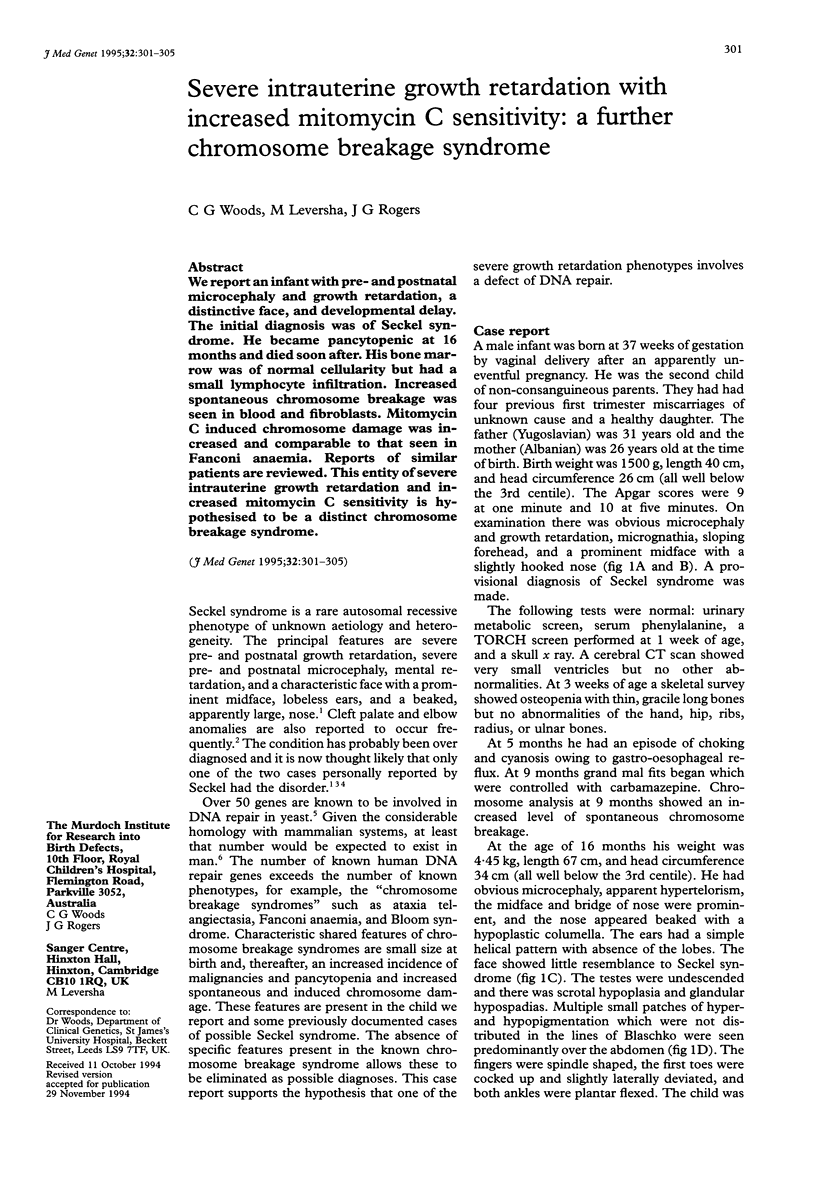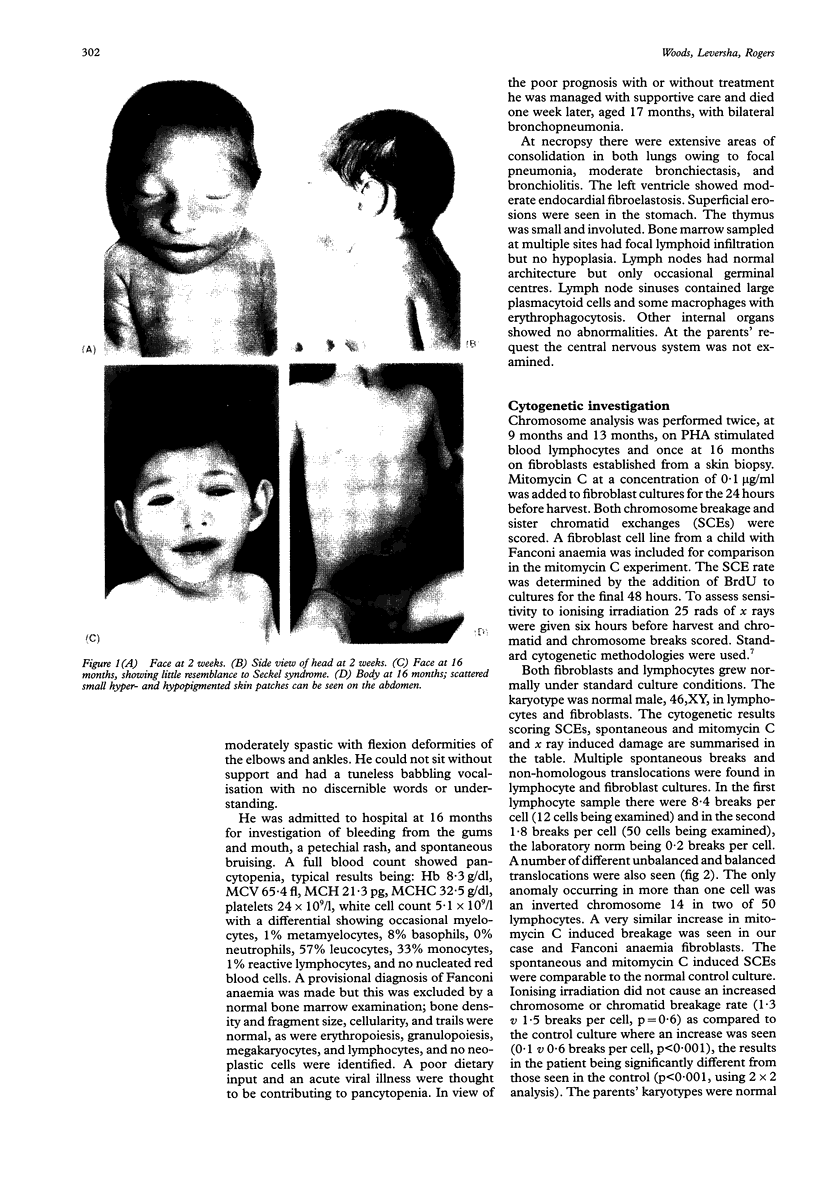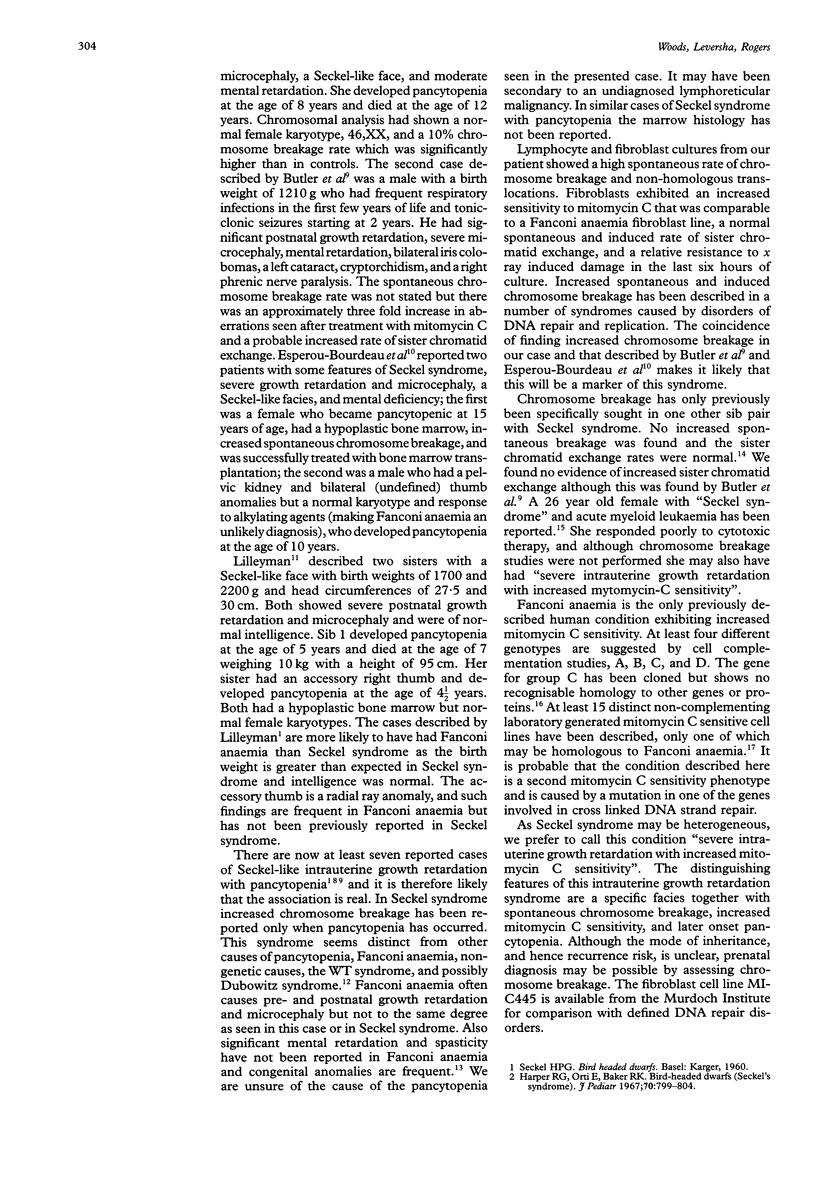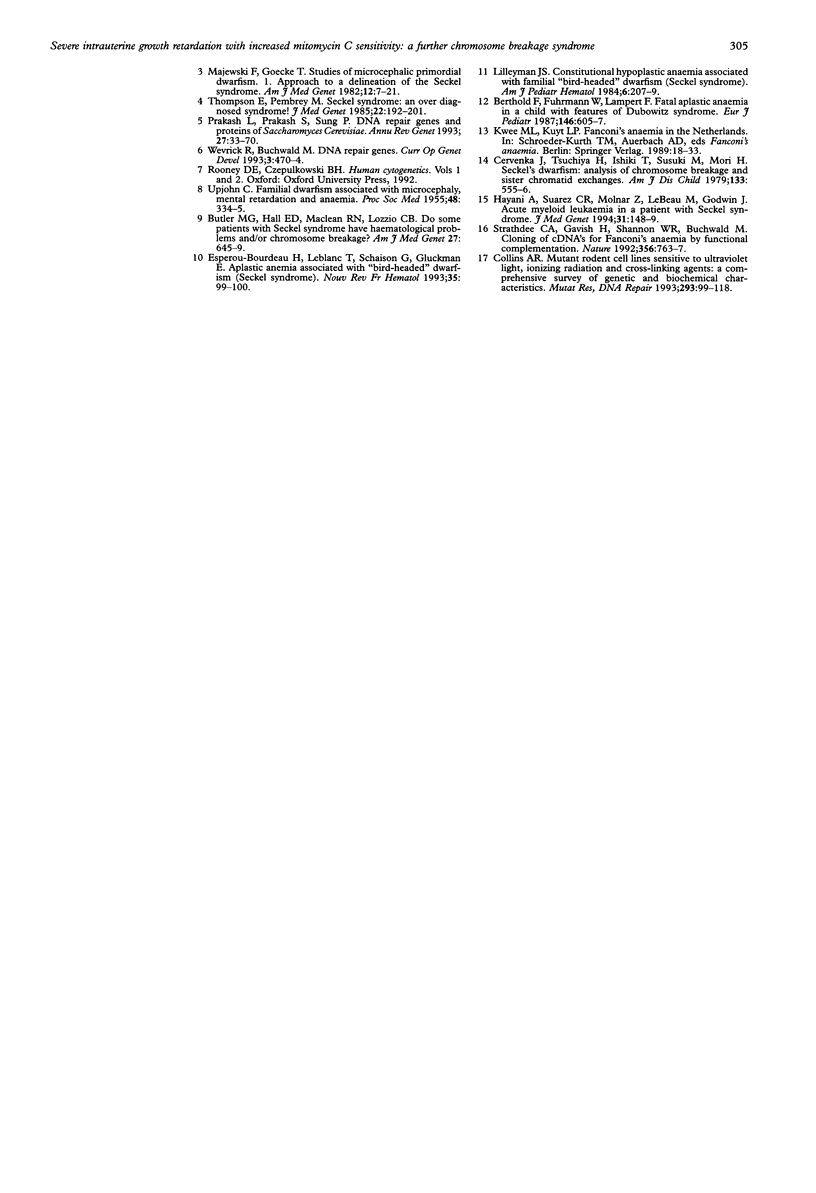Abstract
We report an infant with pre- and postnatal microcephaly and growth retardation, a distinctive face, and developmental delay. The initial diagnosis was of Seckel syndrome. He became pancytopenic at 16 months and died soon after. His bone marrow was of normal cellularity but had a small lymphocyte infiltration. Increased spontaneous chromosome breakage was seen in blood and fibroblasts. Mitomycin C induced chromosome damage was increased and comparable to that seen in Fanconi anaemia. Reports of similar patients are reviewed. This entity of severe intrauterine growth retardation and increased mitomycin C sensitivity is hypothesised to be a distinct chromosome breakage syndrome.
Full text
PDF




Images in this article
Selected References
These references are in PubMed. This may not be the complete list of references from this article.
- Berthold F., Fuhrmann W., Lampert F. Fatal aplastic anaemia in a child with features of Dubowitz syndrome. Eur J Pediatr. 1987 Nov;146(6):605–607. doi: 10.1007/BF02467366. [DOI] [PubMed] [Google Scholar]
- Cervenka J., Tsuchiya H., Ishiki T., Suzuki M., Mori H. Seckel's dwarfism: analysis of chromosome breakage and sister chromatid exchanges. Am J Dis Child. 1979 May;133(5):555–556. doi: 10.1001/archpedi.1979.02130050099023. [DOI] [PubMed] [Google Scholar]
- Collins A. R. Mutant rodent cell lines sensitive to ultraviolet light, ionizing radiation and cross-linking agents: a comprehensive survey of genetic and biochemical characteristics. Mutat Res. 1993 Jan;293(2):99–118. doi: 10.1016/0921-8777(93)90062-l. [DOI] [PubMed] [Google Scholar]
- Espérou-Bourdeau H., Leblanc T., Schaison G., Gluckman E. Aplastic anemia associated with "bird-headed" dwarfism (Seckel syndrome). Nouv Rev Fr Hematol. 1993 Feb;35(1):99–100. [PubMed] [Google Scholar]
- Harper R. G., Orti E., Baker R. K. Bird-beaded dwarfs (Seckel's syndrome). A familial pattern of developmental, dental, skeletal, genital, and central nervous system anomalies. J Pediatr. 1967 May;70(5):799–804. doi: 10.1016/s0022-3476(67)80334-2. [DOI] [PubMed] [Google Scholar]
- Hayani A., Suarez C. R., Molnar Z., LeBeau M., Godwin J. Acute myeloid leukaemia in a patient with Seckel syndrome. J Med Genet. 1994 Feb;31(2):148–149. doi: 10.1136/jmg.31.2.148. [DOI] [PMC free article] [PubMed] [Google Scholar]
- Lilleyman J. S. Constitutional hypoplastic anemia associated with familial "bird-headed" dwarfism (Seckel syndrome). Am J Pediatr Hematol Oncol. 1984 Summer;6(2):207–209. [PubMed] [Google Scholar]
- Majewski F., Goecke T. Studies of microcephalic primordial dwarfism I: approach to a delineation of the Seckel syndrome. Am J Med Genet. 1982 May;12(1):7–21. doi: 10.1002/ajmg.1320120103. [DOI] [PubMed] [Google Scholar]
- Prakash S., Sung P., Prakash L. DNA repair genes and proteins of Saccharomyces cerevisiae. Annu Rev Genet. 1993;27:33–70. doi: 10.1146/annurev.ge.27.120193.000341. [DOI] [PubMed] [Google Scholar]
- Strathdee C. A., Gavish H., Shannon W. R., Buchwald M. Cloning of cDNAs for Fanconi's anaemia by functional complementation. Nature. 1992 Apr 30;356(6372):763–767. doi: 10.1038/356763a0. [DOI] [PubMed] [Google Scholar]
- Thompson E., Pembrey M. Seckel syndrome: an overdiagnosed syndrome. J Med Genet. 1985 Jun;22(3):192–201. doi: 10.1136/jmg.22.3.192. [DOI] [PMC free article] [PubMed] [Google Scholar]
- UPJOHN C. Familial dwarfism associated with microcephaly, mental retardation and anaemia. Proc R Soc Med. 1955 May;48(5):334–335. [PubMed] [Google Scholar]
- Wevrick R., Buchwald M. Mammalian DNA-repair genes. Curr Opin Genet Dev. 1993 Jun;3(3):470–474. doi: 10.1016/0959-437x(93)90122-6. [DOI] [PubMed] [Google Scholar]




